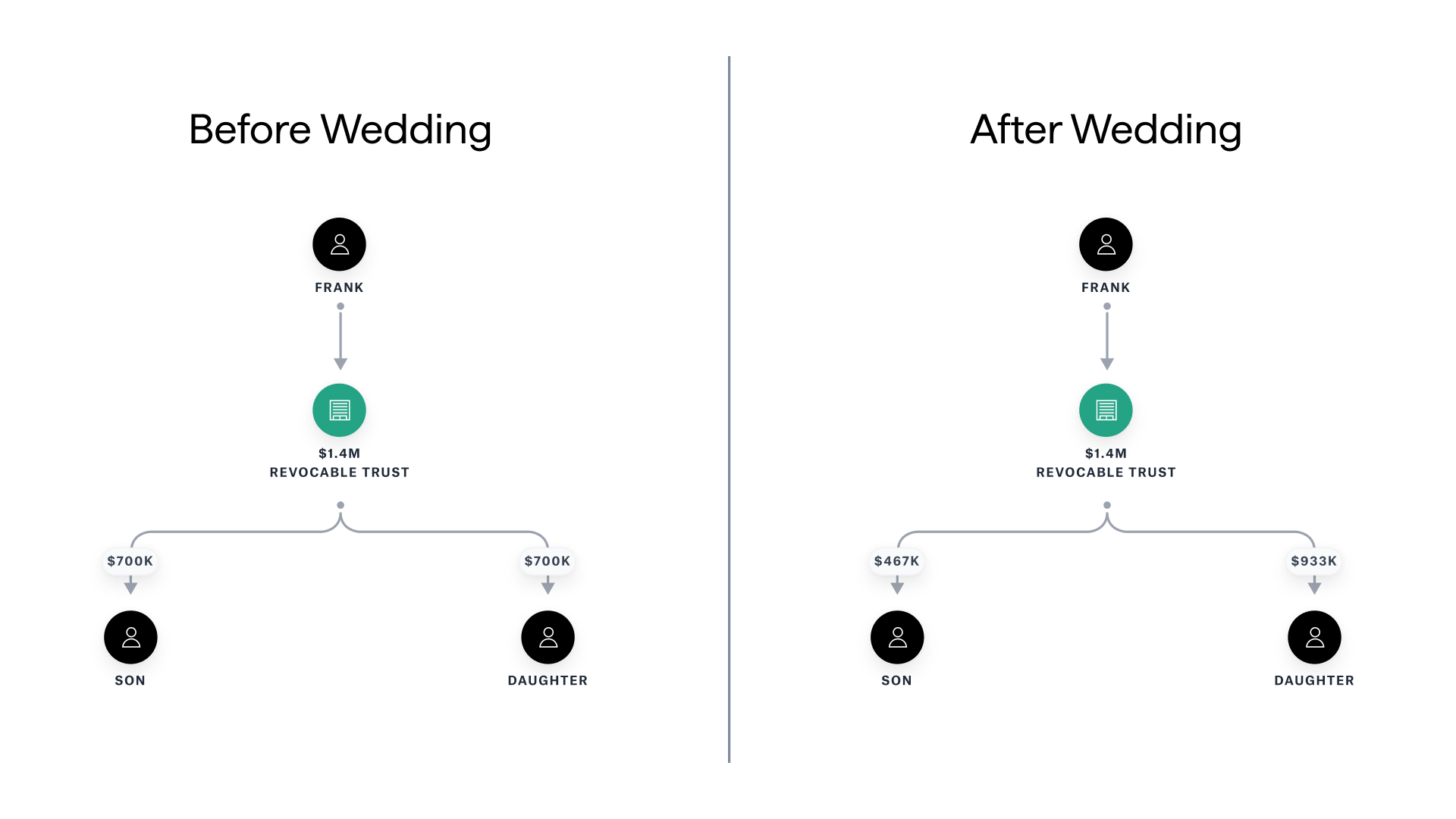 Vanilla
Vanilla
What is a living trust?

A living trust (also called a revocable trust) is a legal document created by a person during their lifetime that directs how their assets are managed during their life, and how they are to be distributed after their death. It can also help bypass or minimize the sometimes expensive and time consuming probate process required by a traditional will.
A living trust is typically used in conjunction with a short will that directs all assets held in the individual’s name to “pour over” to the revocable trust on death (referred to as a “pour-over will”). This living trust estate planning tool is often referred to as a will substitute, and, like a will, dictates a clear and direct plan for what should be done with assets at death.
A living trust may be funded during an individual’s lifetime. The trust will hold the ownership rights to any assets transferred to it, which can include tangible property, bank and brokerage accounts, as well as title to real property, such as the individual’s personal residence. Funding a living trust during life helps to ensure that the assets are speedily and efficiently marshaled, administered, and if desired, distributed, at death.
Unlike some other types of trusts, a living trust is fully revocable, so the grantor has complete control of all of the assets while alive. A house in the trust, for example, could still be refinanced, sold, or even taken out of the trust completely during the lifetime of the grantor. Beneficiaries, or those set to receive the assets upon death, can be added, removed, or changed. Grantors can even change the successor trustee or terminate the trust completely if they choose.
What are the benefits of a living trust?
People choose living trusts for a number of reasons, including:
To avoid probate
At death, a last will and testament is filed for probate with the local court. Probate can be undesirable for many reasons. First, when a will is filed for probate, it becomes a public document. This can be undesirable in the case of an individual that prefers privacy or an individual that does not want their testamentary wishes to become available to the public. By contrast, a living will does not generally have to be filed with the court, is not a public document and so maintains privacy. Second, on death, all assets in the individual’s name become “frozen” until the court confirms the appointment of the executor or personal representative by issuing letters testamentary. Sometimes this process can take many weeks or even months, which can be problematic for a surviving spouse or any other beneficiary that may need immediate access to the decedent’s assets. If, however, the individual’s assets are already in a living trust, there is no need to wait for the probate process to access the assets, as beneficiaries can receive distributions immediately if appropriate. Living trusts therefore make assets more quickly accessible to beneficiaries after a grantor’s death and ease some of the administrative difficulties that often come with the probate process.
To maintain control
Living trusts allow grantors to both enjoy the assets placed in the trust and make changes up until the day they die. When new family members are born, they are easily added. Grantors can also designate assets to be distributed in the future, such as when a minor beneficiary becomes “of age” and can take ownership of assets.
To plan for the unknown
A living trust also doubles as a way for successor trustees to easily take over matters if the grantor is incapacitated and no longer able to manage their own affairs. Instead of going through the court system for this power, the living trust gives that ability when needed. In addition, the trustee will often have greater flexibility to act than an agent named in a power of attorney document.
What are the drawbacks of a living trust?
Living trusts are fairly easy to set up, so there are minimal, if any, drawbacks to doing so. Keep in mind that every change to the trust, including the addition of beneficiaries, requires a change to the document. Grantors will also have to change the title on everything put into and taken out of the trust. This may cost money and time, but any costs should be comparable to changes made to a Will, and pale in comparison to the time and expense of probate.
Important considerations when setting up a living trust
Setting up a living will require some difficult discussions with your client. The two primary considerations will be (1) who they think will best manage their assets (who will act as trustee) and (2) who they would like to inherit their assets at death (who should be named as the trust beneficiaries).
This conversation may be difficult and require them to dig deep to consider who they “trust” with their assets. Many individuals name their spouse as successor trustee, followed by an adult child. However, if they worry about how children or a spouse will manage funds, these fears should be communicated early in the trust creation process to ensure the structure supports these concerns. In those cases, it may be best to name a trusted friend, advisor, or even a corporate fiduciary, as successor trustee.
Each trust situation is different. Asking the right questions about what the grantor hopes to accomplish can help determine the best course of action and trust type.
Living trusts in action
Frank is a 55-year-old widower with a combined asset portfolio of $1,400,000, which includes two houses, a retirement account, and liquid cash. He transfers everything into a revocable living trust during his lifetime. He continues to enjoy the two homes, including living in one and using the other as a short-term rental to generate extra income.
Frank names his oldest daughter to be the successor trustee upon his death. At that time, the trust directs her to split the assets between herself and her unmarried brother. However, after Frank learns that his daughter will be getting married, he decides to change the trust to give her 2/3 of the assets instead of ½, to help her growing family.
Because Frank transferred all of his assets to his revocable trust during his lifetime, his family will not have to go through the probate process on his death. The beneficiaries (his daughter and son) will be able to access the two houses and income earned from them immediately upon Frank’s passing. Outside of Frank’s family and legal professionals, no one will know that the daughter received more unless they tell them.

Notes to financial advisors
If a client has homes in more than one state, a living trust helps the family avoid what could be a very lengthy, expensive series of probate proceedings in many states at once, which likely have varying probate laws. This process is known as ancillary probate. Putting all the assets into the living trust simplifies the process and allows the beneficiaries to focus on what’s important after the grantor’s death, not requiring them to follow court proceedings in several states over many months or years.
Vanilla makes it easier for financial advisors and their clients to visualize their estate plans, including living trusts.
The information provided here and in Vanilla Academy does not constitute legal advice or tax advice; it is provided for general informational purposes only. This information may not be updated or reflect changes in law. Please consult with your financial advisor or estate attorney who can advise as to whether the information contained herein is applicable or appropriate to your particular situation.
Published: Apr 25, 2023
Holistic wealth management starts here
Join thousands of advisors who use Vanilla to transform their service offering and accelerate revenue growth.
